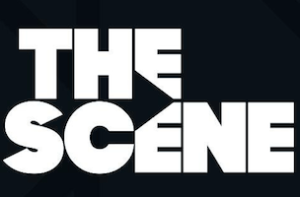Can Magazines Survive the Internet?

Conde Nast, one of the biggest magazine publishers, has spent hundreds of millions of dollars on digital initiatives, hoping to mitigate declining print and advertising revenues. But is it enough?
Conde Nast, the over 100-year-old media company, is home to nearly 50 different print and online magazines across the world, including some of the biggest names in the industry – Vogue, Vanity Fair, GQ, and The New Yorker. Despite the power of these brands, the company, like all print publishers, has been and continues to be immensely challenged by the rise of the internet and the migration of its readers and advertisers to digital outlets. Since 2009, the company has invested hundreds of millions of dollars in the hopes that it can evolve as a business and survive in a digital world.
The Decline of Print Magazines
Magazine publishers have two major sources of revenue – circulation (single magazine sales and subscriptions) and ad revenue. At its height in 2007, U.S. magazine publishing revenue totaled $49.3BN. Fast forward to 2015, that number was down to $28.3BN, a 43% decline from 2007.[i] The decline is a direct result of readers and ad dollars moving toward digital, and it shows no signs of slowing.
Conde Nast felt this decline almost immediately. In 2009, the company suffered its worst year ever after losing $600M to $1BN in revenue compared to the previous year. As a result, the company made a commitment to invest in digital, setting aside $500M to make inroads into new distribution platforms, content creation, and e-commerce.[ii]
Digital Distribution
The first thing Conde Nast focused on was building up its owned web presence. It hired staff to make dedicated content for its websites, creating added value beyond a digital copy of the print magazine. Readers get digital copies with a print subscription, and they also began to sell digital only subscriptions. Looking to expand into mobile, they launched iPhone apps for Vogue, GQ, and Glamour and have partnered with companies like Amazon and Zinio who sell digital magazine subscriptions.[iii] They also began acquiring digital-only content sites, most notably Reddit and Pitchfork Media.[iv]
Digital Video
Understanding that an area ad revenue was growing was digital video, the company launched Conde Nast Entertainment in 2011, an internal development and production studio focused on creating digital video content around its magazine brands. The studio has created over 30 series to date and launched TheScene.com to house all of its digital video series.[v]
In 2015, the company also launched 23 Stories, a branded content studio that allows for advertisers to partner with Conde Nast brands to create video content marketing.[vi]
E-Commerce
To diversify further, Conde Nast has also heavily invested in fashion focused e-commerce sites. The company has invested in Farfetch, Moda Operandi and Rent the Runway and launched its own e-commerce site style.com, which was previously a content site.[vii]
Success to Date
Conde Nast has toted its digital success as of late. In October 2015, the Condé Nast network of sites drew 98.5 million unique visitors, a 36% increase from 72.2 million in October 2014, according to Comscore.[viii] Management also appears to be committed to the medium, hiring its first Chief Digital Officer in 2014 and a new digitally-oriented CEO in 2015.
However, the measures to date are stop gaps, rather than long-term solutions. The company continues to give away its online content for free, instead of building a pay wall. While digital video is popular, its ad margins are far smaller than print, providing a way to slow the decline, but not reverse it. To grow, the company will need to find a way to monetize its online content beyond advertising. Its strategy to diversify revenue sources has provided short term relief, but in the end, its core competency is great content, and they need to better leverage that ability to grow revenue, selling its content to not just readers, but other third parties. (795 words)
[i] Sass, Eric. “Newspaper, Magazine Revenues Fell In 2015.” Media Post. Publisher’s Daily, 11 Mar. 2016. Web. 17 Nov. 2016.
[ii] Davis, Noah. “Conde Nast’s Parent Company’s Smart Plan To Throw $500 Million At Digital Startups.” Business Insider. Business Insider, Inc, 23 Sept. 2011. Web. 17 Nov. 2016.
[iii] Hyde, Rachael. “Hearst and Condé Nast in the Digital Age.” Investopedia. Investopedia, 08 Oct. Web. 18 Nov. 2016.
[iv] Staff, Pitchfork. “Pitchfork Acquired by Condé Nast.” Pitchfork Acquired by Condé Nast Pitchfork. Pitchfork Media, 13 Oct. 2015. Web. 18 Nov. 2016.
[v] Barr., Jeremy. “Condé Nast Updates The Scene Video Hub for a Mobile, Social World.” Advertising Age Special Report NewFronts RSS. AdAge, 03 May 2016. Web. 18 Nov. 2016.
[vi] EMarketer. “Condé Nast on How Digital Has Changed the Concept of In-House Agency – EMarketer.” EMarketer. EMarketer, 12 June 2015. Web. 18 Nov. 2016.
[vii] O’Flaherty, Mark C. “Subscribe to Read.” Ft.com. Financial Times, 2 Sept. 2016. Web. 18 Nov. 2016.
[viii] Sherman, Lauren. “What’s Going On at Condé Nast?” The Business of Fashion. The Business of Fashion, 02 Dec. 2015. Web. 17 Nov. 2016.





The need for all of these traditional content providers to digitize and monetize is loud and clear, but it seems like putting content behind a paywall, particularly for written content, is a losing strategy. Print outlets like the New Yorker already bundle their digital content with their written subscription, so subscribers get access to all media, but that still has not led to any real recovery in revenue. Content feels commoditized, and readers have been so habituated to being able to read for free that I think moving currently free content behind a paywall would lead to mass defection. I think they will need to deliver a fundamentally different product digitally if they are ever going to convince people it is worth paying for.
Magazine publisher very well may need to re-evaluate their business models going forward. As television and video content has moved to on-demand streaming, it will likely bring other forms of content along with. Perhaps the magazine providers will need to begin delivering on-demand digital subscriptions of magazines in order to keep up with the consumer shift to different forms of content consumption. Digitalization just may provide different avenues for monetization as well. Opportunities such as digital advertising, data collection, and social media integration could provide the necessary boost to reinvigorate the industry.
In addition to all of the changes you mentioned, Conde Nast has also made a number of key personnel changes / altered their human capital structure to better align with an increasingly digital environment. For example, Linda Wells, the founder and editor-in-chief of Allure magazine, was fired and Michelle Lee was brought in to replace her. Michelle was formerly the editor-in-chief and CMO at Nylon Media and is “charged with bringing Allure into the digital age and extending its reach to Millennial women” (1). Conde Nast also consolidated the business / publishing sides of Vogue and Teen Vogue to be one unit as they look to cut costs and align their businesses. Your blog post captured the challenges and responses that Conde Nast is confronting as they adapt to the digital environment but also worth considering what changes are required to their human capital structure and what other shifts may be necessary. In addition to the initiatives above, these challenges require a significant amount of senior management’s time.
(1) Alexandra Steigard, “Top Stories of the Year: Shake-ups at Conde Nast”, WWD, http://wwd.com/business-news/media/year-in-fashion-shakeup-conde-nast-ceo-10297685/
To @Alejandro’s point, the term “magazine publisher” may well become a misnomer with regard to the evolving business model of the publishing industry. Going digital typically means offering prior print contents at a heavily discounted price (even with a paywall in place), while unlocking other revenue streams such as programmatic advertising, sponsored contents, data intelligence, and strategic partnerships. It is a bit ironical to see a magazine publisher deriving bulk of its revenue from sources beyond its core competency in content generation and curation. What’s more, the Hubspot HBS case is suggesting yet another extreme: high-quality content for the sake of in-bound marketing and consumer acquisition. It would be interesting to see the strategic evolution of Conde Nast with a new Chief Digital Office and digital-minded CEO in the driver’s seat.